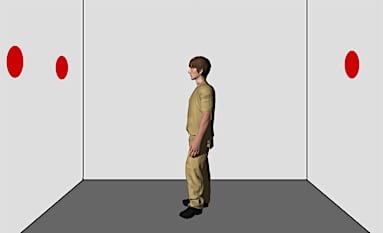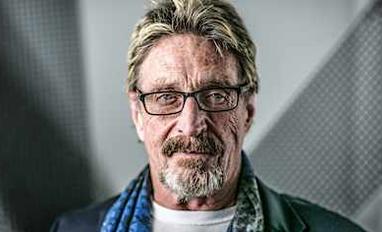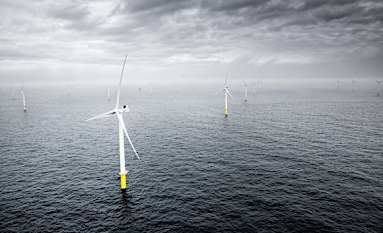Aviation – The shape of wings to come
On 17 December 1903, at a little after 1030 in the morning, a winged contraption made of canvas, wood and wire began to move along a rail placed on a freezing, gale-lashed sand flat in North Carolina. As a tiny petrol engine strained to turn the machine’s twin propellers, it gained speed and its wings began to generate lift. As the force increased and overcame the craft’s weight, Orville and Wilbur Wright’s Flyer took to the air.
It remains one of the greatest moments in technological history. But with the success of that first flight of a powered, heavier-than-air craft – all 12 seconds of it – it would be tempting to think that the pair of Ohio bicycle mechanics had solved aviation’s engineering problems. But now, in the second century of powered flight, aviation engineers are still battling to find better ways to solve some of the very same problems the Wrights faced, and many others of which the pair could never have dreamed.
Among the latter, the aviation industry is being pressed to tackle its growing emissions of greenhouse gases. Although planes are set to get lighter thanks to the use of advanced materials, and their engines will burn leaner, these reductions are more than offset by stupendous growth in air traffic predicted up to 2050.
But at the seat-of-the-pants flying level, it turns out that there are some striking parallels between the Wright’s work at the beginning of the 20th century and the research going on now.
The shape shifters
Ever since the Wrights came up with the idea of steering in the air by bending the wing tips of their aircraft – “wing warping” – aircraft designers have dreamed of being able to alter the contours of their creations while on the move. The shape of an aircraft’s tail and the length of its wings, for example, determine its flying characteristics, so being able to alter them during flight could make existing designs more versatile, and turn specialist aircraft into workhorses capable of all kinds of tasks.
A new design-approach based on smart materials and actuators could turn shape-shifting from a dream into the hottest aeronautical essential since Frank Whittle’s jet engine. The result would be planes with wings that grow, bend and shrink on command, morphing into the best shape for the task in hand.
A rudimentary type of shape-shifting has been tried before. The US, Europe and the USSR all developed aircraft in the 1960s and 1970s that could swing their wings forward or back as required. But the severe limitations of this design soon became apparent.
Mounting the wing on a single pivot means the joint has to be strong, heavy and mechanically complex. The extra weight affects fuel economy, and the complexity increases costs. “Swing wings are a really inefficient way to do it,” says Terry Weisshaar of the Pentagon’s Defense Advanced Research Projects Agency in Washington DC – the outfit that created the internet in the 1960s.
As head of DARPA’s “morphing aircraft structures” project, Weisshaar has handed out grants amounting to tens of millions of dollars to three companies – Lockheed Martin, Raytheon and NextGen Aeronautics – to see which can come up with the best way for a plane to change its wing shape safely mid-flight. “The aim is to give a single military airplane the ability to perform drastically different missions,” he says.
The shape of a plane that needs to “loiter” for a long time, on reconnaissance say, and the shape of one that needs to fly fast to intercept a target are very different. Loitering requires long wings with a large surface area, whereas high speeds call for narrow, smaller wings. So DARPA aims to create wings that can change their surface area by more than 150%.
So how will they do it? DARPA has three ideas on the drawing board. Lockheed Martin, based in Fort Worth, Texas, US, is exploring an origami-like folding wing, while NextGen Aeronautics, based in California, US, envisages a “batwing” comprising a series of “sliding skins” that unlatch, fan out to create new wing shapes, and then latch together again. Raytheon, based in Waltham, Massachusetts, US, is working on a wing that telescopes out of the fuselage.
To reshape wings during flight requires arrays of tiny but powerful devices called compact hybrid actuators. These motors use a piezoelectric material – one which deforms slightly when an electric field is applied to it. Apply the field repeatedly and the motor can be made to ratchet along a toothed track, pushing or pulling a section of wing as it goes. Small piezoelectric motors could sit inside a wing and deliver force where it is needed.
But shape-shifting will create another headache: any gaps that appear as you open up a joint in a wing will cause drag. And if an aircraft is travelling at supersonic speeds, the stresses this drag creates could rip a wing apart. So DARPA is looking at a new generation of “shape memory” materials that might stretch and move with the wings, sealing joints as they open and close.
Shape memory metals have been around since the 1930s, but it is new shape memory polymers (SMPs) that are catching DARPA’s eye, since they are more versatile and flexible. An SMP’s chemical structure allows it to be stretched and pulled into various shapes, yet it will automatically resume its original shape when heated above a certain threshold. For example, an aerofoil-shaped sheet of SMP could be bent into a flat sheet, but when it is heated above its transition temperature, it would snap back into an aerofoil shape.
The plan is to cover the joints of a folding or telescoping wing with SMP so as the wing changes shape, the polymer stretches with the movement. When the shape shift is complete, tiny heaters attached to the SMP would warm the material above its transition temperature and the SMP would reseal the joints around the new wing configuration. Research is focusing on making these polymers strong and yet stretchy enough to cope with repeated use at high air speeds.
Engineers also plans to revisit an idea the Wright brothers borrowed from birds. If you can morph the wings quickly enough, shortening one wing slightly and tilting the other, it should be possible to steer the craft much like a bird steers. This would save weight and reduce drag, since you would not need ailerons, rudders or tail fins.
Boeing, NASA, and the US Air Force are also interested in borrowing from birds. Together they are developing what’s called an “active aeroelastic wing”. By turning an aircraft’s entire wing into a deformable control surface you can dispense with ailerons and flaps – when you want to steer or roll you simply twist the whole wing. Boeing expects the technique to produce a 20% fuel saving.
You can read an interview with DARPA’s Terry Weisshaar here.
Noisy neighbours overhead
Airlines know all too well that those who live near airports, or below busy flight paths, view (or rather hear) them as the neighbours from hell. And the problem could get worse.
The industry is desperate to maintain today’s 5% annual growth in passenger numbers. Unfortunately this growth roughly equates to a tripling of air traffic by 2030. Governments will not allow the industry to triple its noise pollution, so something has to give. “Quiet design is now a fundamental requirement for new aircraft,” admits Billy Glover, Boeing’s director of environmental performance.
The biggest guns in the aerospace industry, including Boeing and Airbus Industrie have already established research programmes to tackle aircraft noise. But one of the biggest multidisciplinary efforts to address this issue is being run by the Cambridge-MIT Institute (CMI), a joint venture between MIT in Boston and the University of Cambridge in the UK. The aim? To come up with revolutionary ways to make quieter aircraft.
CMI’s Silent Aircraft initiative is exploring the potential of flying wings or “blended wing-body” aircraft. The engines are mounted on top in a noise-absorbing enclosure lined with layers of steel and foam that are tuned to damp the worst engine frequencies (see diagram).
By mounting the engines on the top of this broad wing, the theory goes, people on the ground should be shielded from the worst of the noise. The trick will mainly help on take-off, when most of the noise from an aircraft comes from engines roaring away at high thrust.
But during landing it is the airframe ripping through the air that makes the din. Worst of all are the flaps that extend from the trailing edges of the wings. These increase the surface area of the wing to make sure it has enough lift to stay in the air as it slows. But the turbulent airflow across and between them creates strong vibrations: it is like blowing across the reed in a wind instrument, says aeronautical engineer Tom Hynes at Cambridge University, UK.
So getting rid of the flaps altogether is the aim of a technique Hynes and his colleagues are investigating. It’s called boundary layer ingestion. During normal flight, lift is enhanced by a thin “boundary layer” of slow-moving air that hugs the wing like a smooth skin, allowing the fast airflow to move cleanly past it without becoming turbulent. But during landing, as the aircraft slows and the wing slices the air at a greater angle, the boundary layer at the rear of the wing becomes turbulent and can separate from the wing entirely. This reduces lift and increases noise, says Hynes.
However, if that turbulent layer is sucked in through tiny holes in the rear two-thirds of the upper surface of the wing, you can pull the smooth airflow back towards the wing surface, boosting lift (see diagram). The same kind of airflow control could eventually be used to reduce drag, and even replace control surfaces such as ailerons or rudders, too.
The downside? Blended wing-body aircraft are so radically different to current civil aircraft designs (though not so different to the B2 Stealth Bomber) that they are unlikely to fly for at least a decade, assuming a plane maker can be convinced the idea is commercially viable.
In the meantime, the CMI consortium is pressing for changes to the way aircraft approach airports, extending the approach path into a smoother, continuous descent that does not require frequent and noisy thrust changes at every minor change of heading. Such measures have already been shown to cut aircraft noise near airports significantly.
Giants take to the skies
The number of passenger seats that airlines expect to fill is rising and, if current growth is sustained, some 4 billion passengers will fly in 2030, compared to 1.3 billion in 2002. But with airports already packed to bursting, the aviation industry needs to work out how it will achieve this. So far two main strategies have emerged.
Number one? Enormous aircraft. London’s Heathrow airport, alongside many other major airports, is hoping that swelling passenger numbers will be swallowed up by a new generation of huge aircraft, and one huge aircraft in particular – Airbus Industrie’s 800-seat, 80-metre wingspan A380.
The A380 is the world’s first fully double-deckered passenger jet, which had its first test flight in April 2005. Though smaller than the Antonov 225, the monstrous six-engined Russian military cargo plane, the A380 will be the world’s largest passenger jet. Runways will need strengthening to handle its weight, aprons widening to take its width, and a new breed of double-decker jetties built to get people on and off of it.
The fly-by-wire A380’s inaugural test flight was dubbed “uneventful” by the crew. However, manufacturing delays mean it will take Airbus six months longer than expected to deliver the first A380. Instead of a projected service start in October 2006, airlines like Qantas, Singapore Airlines and Emirates now expect their aircraft in April 2007.
The key to building the giant is keeping its weight down, says Daniel Deviller, technology director at the European Aeronautic Defence and Space Company (EADS), headquartered in The Netherlands, which owns most of Airbus. More than 20% of the A380 is made of lightweight-but-strong composite materials, mainly carbon-fibre-reinforced plastic.
The design is the first large-scale use of glass-fibre-reinforced aluminium (GLARE), a new composite that is 25% stronger than conventional airframe aluminium, but 20% lighter.
The second strategy to cope with soaring passenger numbers? Almost the exact opposite. Instead of trying to push more passengers through the same large airports, Boeing is banking on a revolutionary change in the way flight networks operate.
In the US, figures show that 75% of passengers tend to fly through just 29 airports, yet 98% of Americans live less than 40 kilometres from a small local airport. Instead of flying between a few large “hubs” that act as feeders to smaller regional airports, why not build smaller aircraft that can fly easily from one airport to any other, no matter its size?
This switch from hub-and-spoke operation to point-to-point travel could triple the capacity of air traffic control systems, as well as making air travel four times faster than using roads alone, according to a US government study.
Such a revolution would require a new generation of smaller, lighter, quieter airliners. Enter the Boeing 787 Dreamliner, a new low-cost, 200-seater twin-jet. The 787’s engine and airframe design will reduce fuel consumption – and emissions – by as much as 20%, which is vital if the plane is to fly into airports in city centres.
One of the factors that will make a point-to-point network viable is “free flight”, the idea of giving pilots control over where they fly rather than using air traffic control. Free flight relies on computers aboard each aircraft, linked to computers on the ground, to wrap a plane in a virtual “bubble” extending forward up to 300 kilometres, into which no other aircraft can stray.
Onboard software uses data from aircraft radar and ground-based sensors to give aircraft advance warning of any possible collision, so planes should be able to fly direct, more fuel-efficient routes (New Scientist, 13 July 2002). Tests of a free-flight control system developed by NASA and Embry-Riddle University in Florida have already begun.
Automated air traffic control will be essential, too, if true personal flight is ever to succeed. Flying cars that you can land in your backyard have been promised many times, but Boeing believes they are finally coming. “Our job is to look into the future, to the extreme version of point-to-point air transport,” says Pam Drew, engineering vice-president at the firm’s Phantom Works R&D lab in Seattle. “And that would be personal transportation vehicles where you can have this thing take off and land from your driveway.”
Until now, the idea of a flying car has only been pursued by small outfits building vehicles such as the Moller Skycar (New Scientist, 14 June 2003). These cost a whopping $500,000, but the economies of scale in a company with Boeing’s manufacturing capacity could send that price plummeting.
But the barrier to launching a successful flying car is not so much the flight hardware as the collision-avoidance software, says Drew. So she and her team are exploring the technologies and automated software necessary for personal flight. Much of the latter is derived from Boeing’s work on software that allows military unmanned aerial vehicles to fly in formation (see below). With Boeing backing the idea, personal flight could become viable more quickly than anyone imagined.
Anyone seen the pilot?
As the skies have become more crowded, accident rates have actually fallen. But maintaining this trend will be a major challenge, given a new breed of hazard facing the aviation world.
“Unmanned aerial vehicles”, or UAVs, are already flying combat missions in war zones, and in the coming decades we could see swarms of unmanned cargo planes, and remotely piloted passenger jets, criss-crossing the skies. So how do we handle the new dangers?
According to the UK Civil Aviation Authority, “controlled flights into terrain” – crashing without the pilot realising he or she was anywhere near the ground – are not only the most common type of accident, but occur more than twice as often as crashes due to loss of control, for example. So one of the most important safety improvements will be a new generation of “terrain avoidance warning systems” (TAWS) that marry data from radar and ground radio beacons with a 3D terrain database.
These systems not only show pilots where they are, but how much room there is between them and the nearest rock. The International Civil Aviation Organization in Montreal, Canada, is pressing airlines to adopt these systems, but ensuring that the database shows the right bit of terrain is the challenge.
Another major challenge is spotting air turbulence and the “wake vortices” from other jets. Clear-air turbulence is a random motion of air pockets that occurs at the boundary between moving air layers. Wake vortices are invisible but powerful horizontal whirlwinds stream from the wingtips of planes.
Hitting either of these disturbances can injure or kill passengers, or even crash a low-flying plane. But these threats could be all but eliminated with a new generation of detectors. The most promising is a souped-up version of lidar, a laser-based sensor rather like radar, which can measure air turbulence. EADS and Michigan Aerospace in Ann Arbor, are separately building lidar that can “see” clear-air turbulence and wake vortices.
Conventional lidar uses infrared light, which scatters off particles suspended in the air. If the particles are moving, they shift the wavelength of the reflected light, and show up as an abnormal velocity profile – but only if there are enough particles around.
By switching to a shorter wavelength ultraviolet laser, the lidar measures scattering from nitrogen and oxygen molecules. This can measure both wind speeds and pressure, and easily detect vortices and turbulence. Integrate it into a flight control system and a plane could automatically steer around turbulence, says Helmut Zinner of EADS’s Munich research centre.
Meanwhile, UAVs present their own risks. At the moment, these craft are not subject to the same tough safety standards as manned aircraft, which raises the question of whether they should be allowed to share the same airspace as passenger aircraft. In 2002, the US National Transportation Safety Board calculated the number of commercial airplane crashes in US airspace at 0.06 per million flying hours. According to the Pentagon, the crash rate for the remotely piloted Global Hawk UAV is 1600 per million flight hours.
Access 5, a lobby group comprising the Pentagon, Lockheed Martin, NASA, Boeing, and aerospace firm Northrop Grumman, is pushing the US aviation authorities to loosen restrictions on UAVs. This has alarmed pressure groups for aviation safety like the National Air Disaster Alliance in Washington, DC.
They believe that UAVs should not be able to share runways with civilian jets. Pilots are also concerned that unmanned planes will have poor collision avoidance capabilities in flight, and wonder what might happen if a UAV’s remote satellite radio link is lost.
Whatever form they take, says Pam Drew, engineering chief at Boeing’s Phantom Works research lab, there is little doubt that in the future the skies will be shared by a combination of piloted and unpiloted vehicles.
And as unmanned aircraft become more common, there will be pressure to automate freight aircraft and even passenger planes. Drew’s engineers are already designing software that uses GPS satellite navigation to allow UAVs to fly in formation.
You can read an interview with Boeing’s Pam Drew here.
Like the two bicycle mechanics who tirelessly studied the way turkey vultures soared to get their Flyer off the ground in 1903, Boeing hopes to copy the way birds flock without colliding, allowing them to develop software that lets large numbers of unmanned planes fly together on the same routes for fast yet safe bulk cargo transport. In mimicking the birds, it seems that Orville and Wilbur Wright have set a trend that will run and run.
More on these topics:
MORE FROM NEW SCIENTIST
PROMOTED STORIES








No comments:
Post a Comment